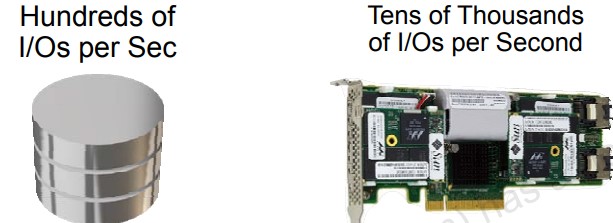For many years, a constraining factor for storage performance has been the number of random I/Os per second (IOPS) that a disk can deliver. Even a high-performance disk can deliver only a few hundred IOPS. To compensate for this, large storage arrays with hundreds of disks are needed to deliver the 60,000 IOPS or more required by a typical enterprise system.
A key enabler of Oracle’s Exadata Database, Exadata Smart Flash Cache is a caching mechanism for frequently accessed data. It is a write-through cache which is useful for absorbing repeated random reads and very beneficial to OLTP. Using Exadata Smart Flash Cache, a single Exadata cell can support up to 75,000 IOPS, two cells can support up to 150,000 IOPS, and so on.
Exadata Smart Flash Cache focuses on caching frequently accessed data and index blocks along with performance critical information such as control files and file headers. In addition, Database Administrators (DBAs) can control caching priorities using the storage attribute CELL_FLASH_CACHE for specific DB objects.
Exadata Storage Server Tools
You can identify the metric and its given description using the below command.
- list metricdefinition attributes name, description where objectType = ‘FLASHCACHE’

Use the LIST METRICCURRENT statement to return Smart Flash Cache metrics for the selected storage cell. These metrics are cumulative from the time the CELLSRV started and from a single storage cell only. Hence, the same command needs to be executed in all the cells to monitor the activity of the entire Smart Flash Cache usage.
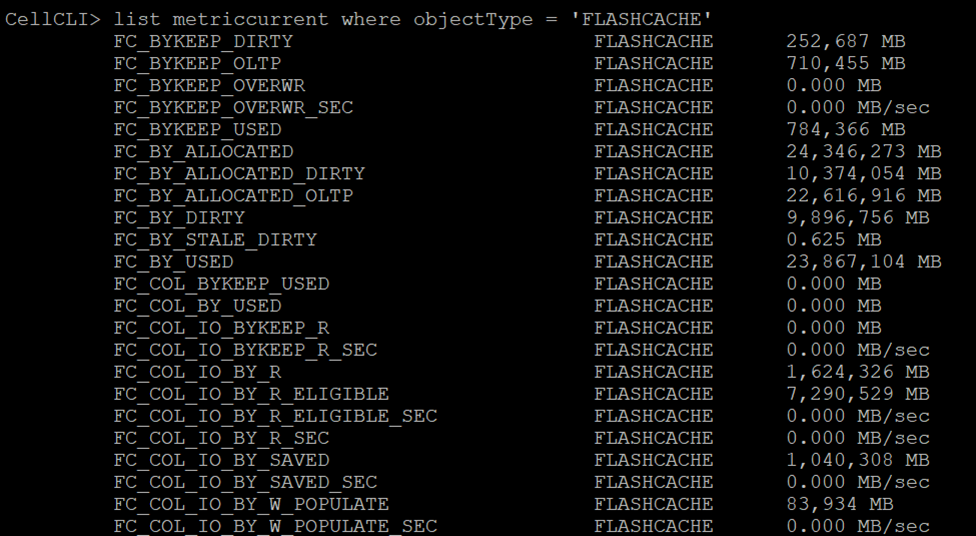
Metrics for objects where the storage clause has been set to “CELL_FLASH_CACHE” to KEEP can be retrieved as follows.
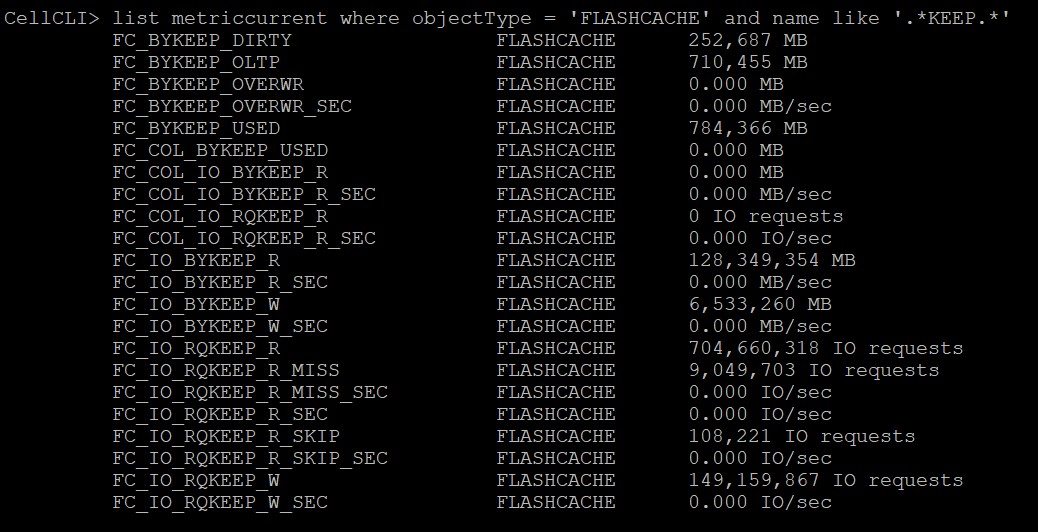
You can also identify what elements the cache is using by running the list flashcachecontent command. To issue this command, we need to identify the attributes.
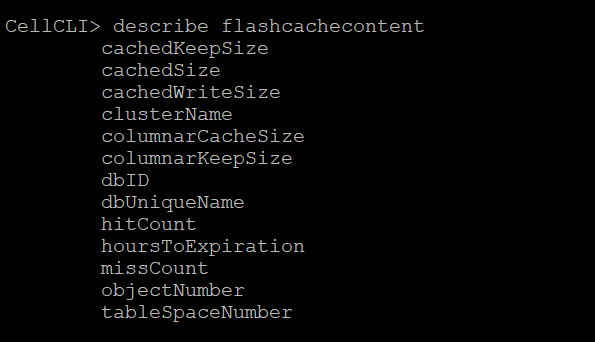
For example, you can identify the details of a specific database, say “BITRN01”. The objectNumber and tableSpaceNumber attributes are specific to a given dbID.
Please note that by default, the LIST FLASHCACHECONTENT command reports the dbID, tableSpaceNumber, and objectNumber. To return other attributes, these must be listed in the command, using the attributes clause, as in the example below.

Object name is not included in the attributes list, but you can return those attributes from the database instance as follows.
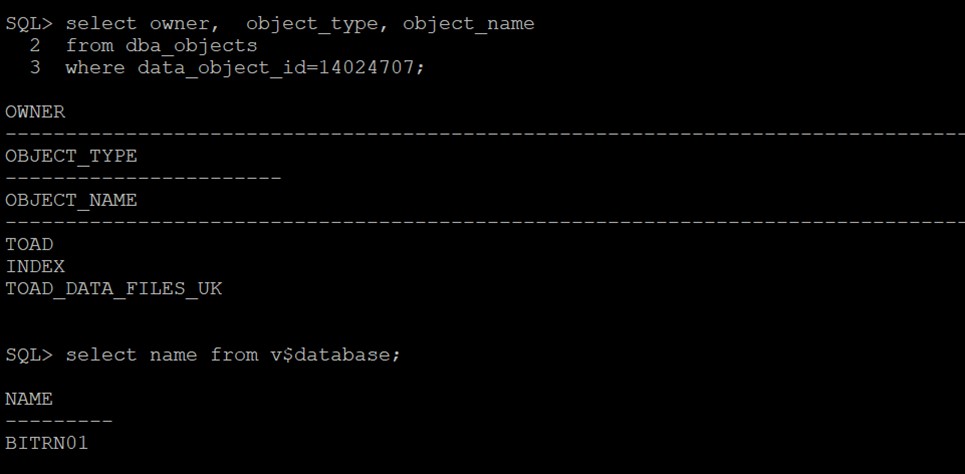
Database Server Tools
Below are the statistics available for Exadata Smart Flash Cache in the database instance. You can query the attributes as follows. The easiest way to measure the Smart Flash Cache activity for a SQL statement is to query V$MYSTAT before and after the statement is executed.

The Benefits of Exadata Smart Flash Cache?
- Increased performance: Exadata Smart Flash Cache provides much faster data access compared to traditional hard disk drives.
- Reduced latency: By keeping frequently accessed data in flash memory, Exadata Smart Flash Cache significantly reduces database query latency.
- Enhanced database efficiency: With Exadata Smart Flash Cache , database administrators can optimize database performance by offloading I/O-intensive operations to flash storage.
- Optimized resource utilization: Exadata Smart Flash Cache enables more effective use of server resources, as more processing power is freed up for other tasks.
- High reliability: Exadata Smart Flash Cache is built with high-end, reliable flash memory technology to ensure maximum uptime and minimal data loss.
Conclusion
Oracle’s Exadata Smart Flash Cache is a unique feature that uses software intelligence to determine how and when to incorporate Flash into the database as part of a coordinated data caching strategy. Exadata Smart Flash Cache delivers unprecedented IOPS for the most demanding database applications.
By knowing what data to cache and how to automatically manage the cache, the Oracle Database, with the Exadata Smart Flash Cache, is the first and only Flash enabled database.


